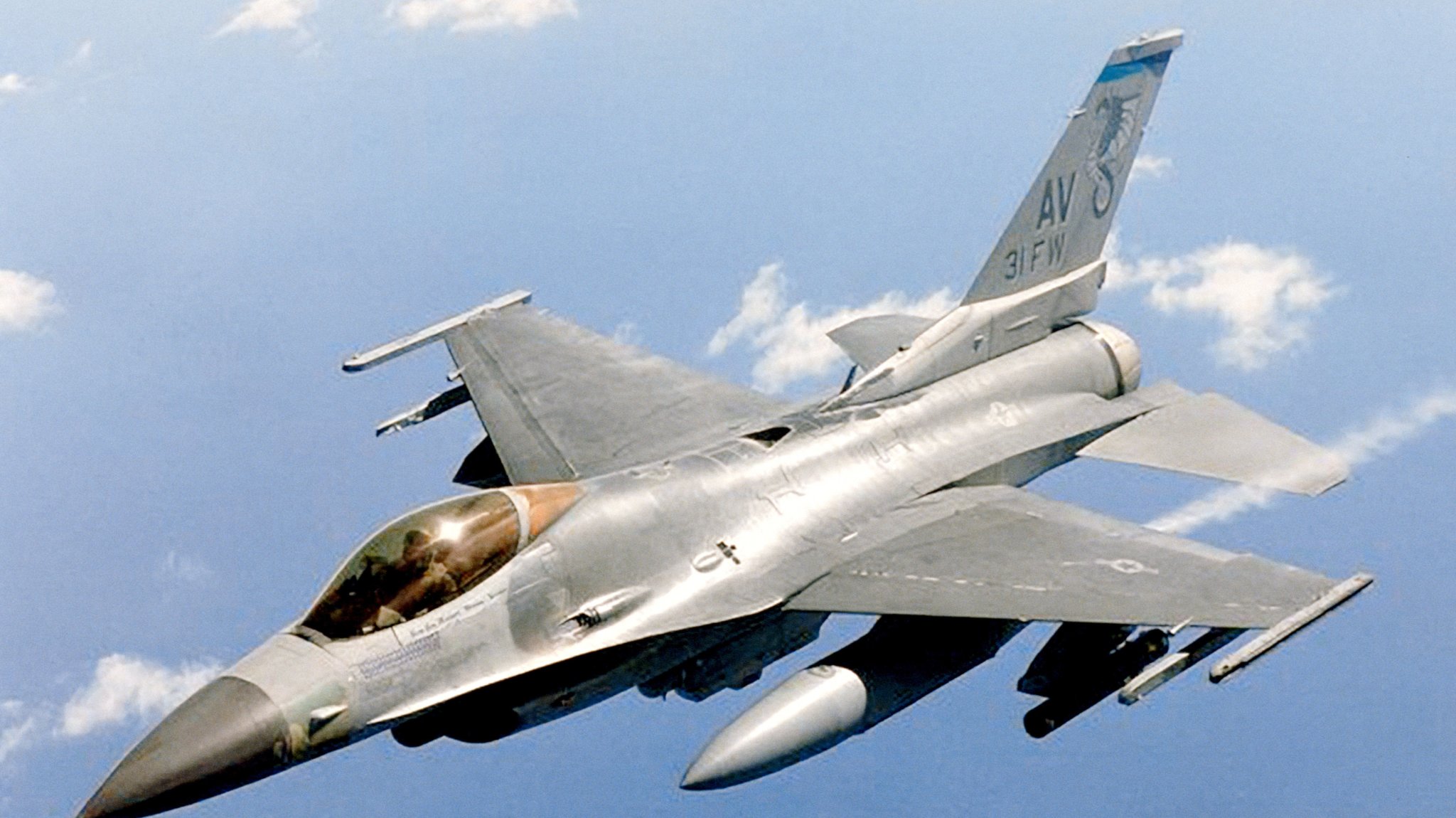[ad_1]

On Monday, the US Department of Defense’s research agency, DARPA, announced that its AI algorithms can now control an actual F-16 in flight. The fighter aircraft that was first introduced in 1978 has now seemingly evolved into an autonomous plane.
“In early December 2022, ACE algorithm developers uploaded their AI software into a specially modified F-16 test aircraft known as the X-62A or VISTA (Variable In-flight Simulator Test Aircraft), at the Air Force Test Pilot School (TPS) at Edwards Air Force Base, California, and flew multiple flights over several days,” a press release by DARPA said. “The flights demonstrated that AI agents can control a full-scale fighter jet and provided invaluable live-flight data.”
DARPA’s Air Combat Evolution (ACE) program began in 2019 when the agency began to work on human-machine collaboration in dogfighting. It began testing out AI-powered flights in 2020 when the organization had what was called the AlphaDogfight Trials, a competition between different companies to see who could create the most advanced algorithm for an AI-powered aircraft.
ACE is one of more than six hundred Department of Defense projects that are incorporating artificial intelligence into the nation’s defense programs. In 2018, the government committed to spending up to $2 billion on AI investments in the next five years, and spent $2.58 billion on AI research and development in 2022 alone. Other AI defense projects include making robots and wearable technology, and intelligence gathering.
Autonomous airplanes are not unheard of—the earliest successful instance of an autopilot plane was in 1914, when a man named Lawrence Sperry attached a gyroscope, or a rapidly spinning wheel, to the tail and wings of a plane. However, the AI systems powering fighter planes require a greater degree of accuracy and agility than a passenger plane, for example, as it is programmed to undergo a variety of warlike conditions.
DARPA said that it doesn’t expect the plane to fly without a pilot. It hopes to incorporate AI in order to have “human pilot focuses on larger battle management tasks in the cockpit” and have the AI control the jet and provide live-flight data.
Stacie Pettyjohn, the director of the Defense Program at the Center for a New American Security, told The New Yorker that the ACE program will allow American defense to become “much smaller autonomous aircraft” and “if any one of them gets shot down, it’s not as big of a deal.”
According to the same article, four AI-powered L-39s will participate in a live dogfight in the skies above Lake Ontario in 2024. Meanwhile, the Air Force Test Pilot School is working on measuring how well pilots trust the AI agent and calibrating trust between humans and the AI.
[ad_2]
Source link
